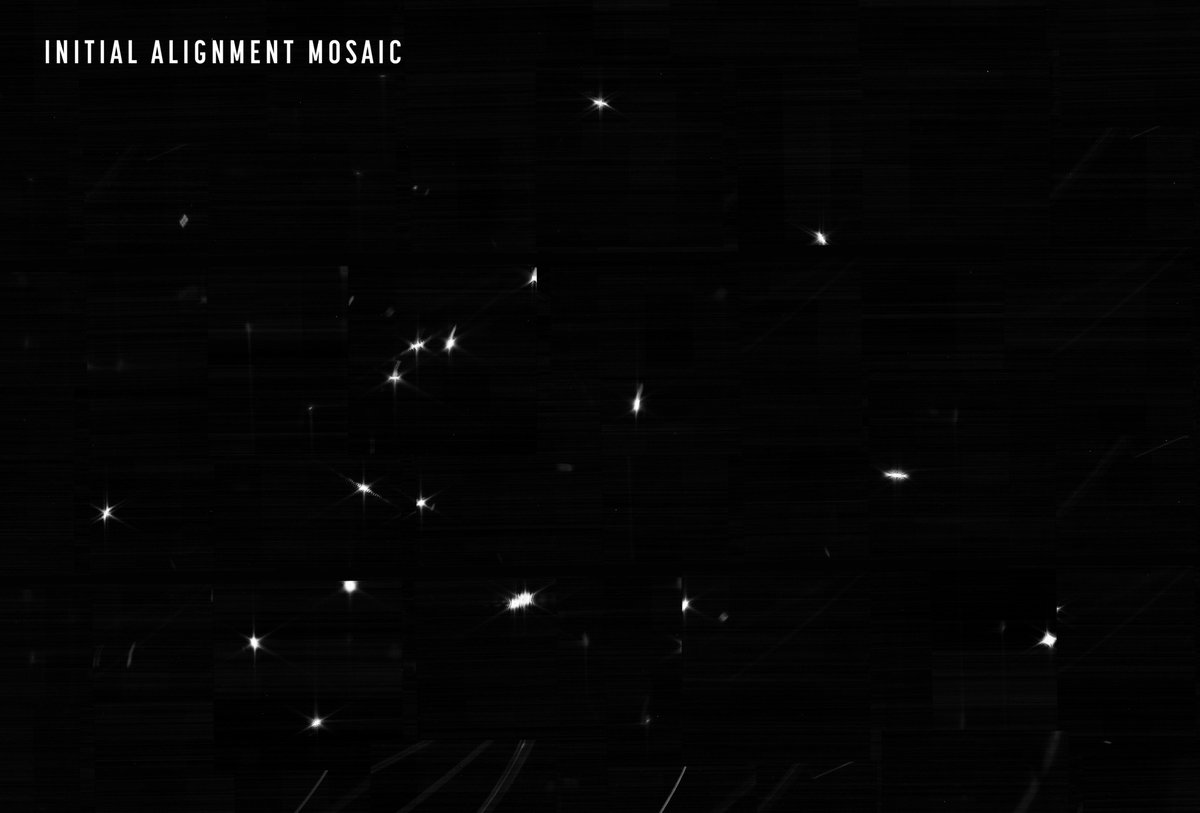
“It’s full of stars!” ✨
This mosaic represents a sparkling turning point as we #UnfoldTheUniverse. #NASAWebb’s mirrors are now fully aligned! Next is instrument calibration, the final phase before Webb is ready for science: go.nasa.gov/3OJWBD1
What do we see here? ⤵️
This mosaic represents a sparkling turning point as we #UnfoldTheUniverse. #NASAWebb’s mirrors are now fully aligned! Next is instrument calibration, the final phase before Webb is ready for science: go.nasa.gov/3OJWBD1
What do we see here? ⤵️

First, a quick breakdown. “Fully aligned” means that Webb’s mirrors are now directing fully focused light collected from space down into each instrument. Each instrument is also successfully capturing images with the light being delivered to them.
In this mosaic, each engineering image is a demonstration that one of Webb’s instruments is fully aligned with the telescope and in focus. In view is a part of the Large Magellanic Cloud, a small, irregular satellite galaxy of the Milky Way. 

The sizes & positions of the images represent the relative arrangement of each of Webb’s instruments in the plane where the telescope focuses light. In comparing the images, you may see that each instrument points at a slightly offset part of the sky relative to the rest.
Like our last engineering image, this mosaic is in a red color palette that was chosen to optimize visual contrast. As a reminder, colors in space telescope images sometimes recreate the way our eyes see; other times they are selected to highlight features of an object.
Let's turn the sound up…we think it's time for an instrument round up!
Webb’s imaging instruments are NIRCam, NIRISS and MIRI. MIRI sees in mid-infrared light instead of near-infrared like the others, so you can see interstellar clouds as well as starlight in its image!
Webb’s imaging instruments are NIRCam, NIRISS and MIRI. MIRI sees in mid-infrared light instead of near-infrared like the others, so you can see interstellar clouds as well as starlight in its image!
NIRSpec is a spectrograph, not an imager, but it can take images for calibrations & target acquisition. See those dark bands? They're due to structures of its microshutter array — tiny “window” shutters that can be opened or shut to capture data from 100 objects simultaneously.
Bundled together with NIRISS is Webb’s Fine Guidance Sensor (FGS), which tracks guide stars to point the observatory accurately and precisely. Its 2 sensors are not generally used for scientific imaging but can take calibration images like these.
The optical performance of the telescope continues to be better than the engineering team’s most optimistic predictions. From this point forward the only changes to the mirrors will be very small, periodic adjustments to the primary mirror segments.
During Webb’s next & final step, instrument calibration, each instrument’s specialized tools (masks, filters, lenses, etc.) will be configured and operated in various combinations. This will allow us to confirm their readiness for science operations this summer.
Oops! We were so excited about Webb we messed up on our blog link. 😬
Here it is: blogs.nasa.gov/webb/2022/04/2…
You can always find our latest blog at the top of blogs.nasa.gov/webb!
Here it is: blogs.nasa.gov/webb/2022/04/2…
You can always find our latest blog at the top of blogs.nasa.gov/webb!
• • •
Missing some Tweet in this thread? You can try to
force a refresh








